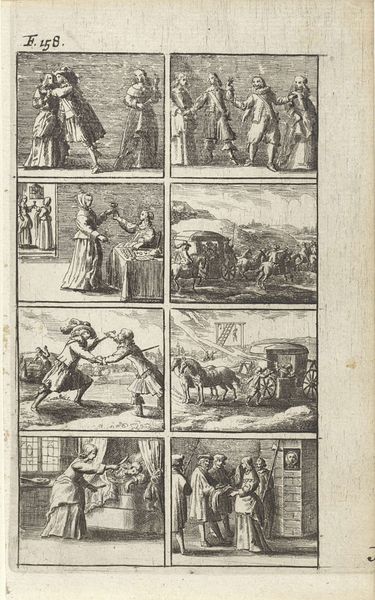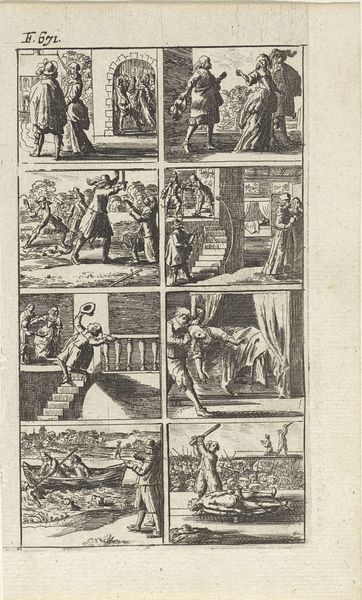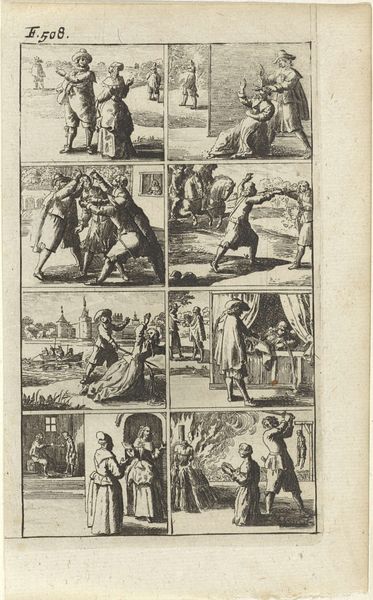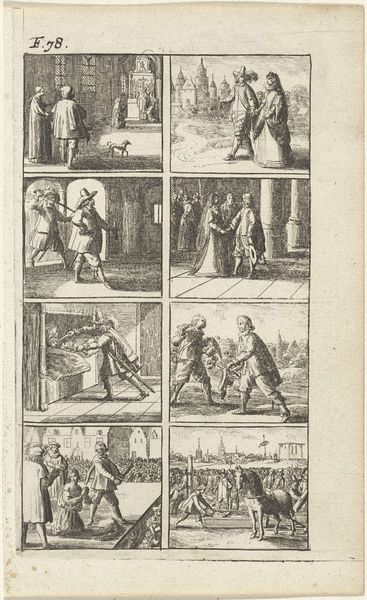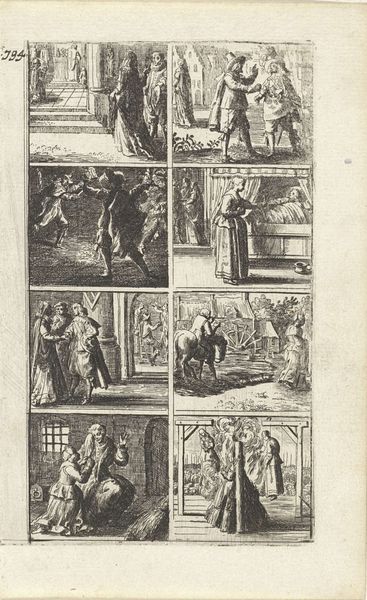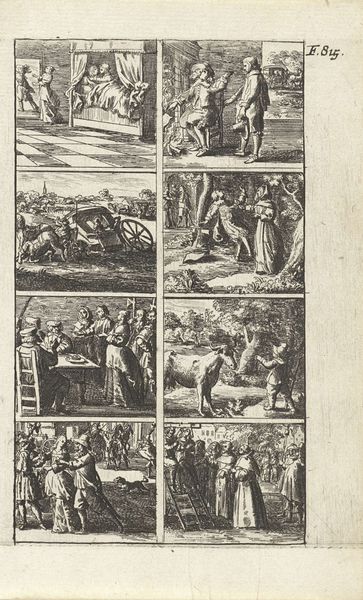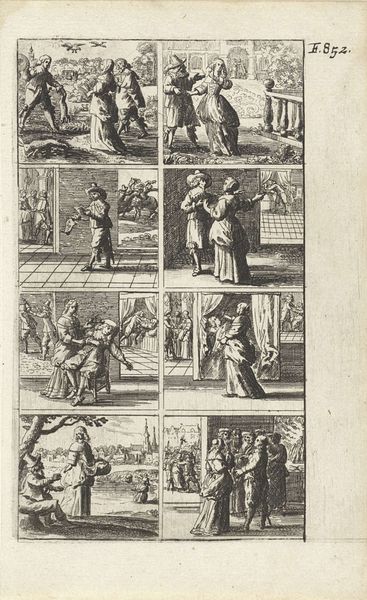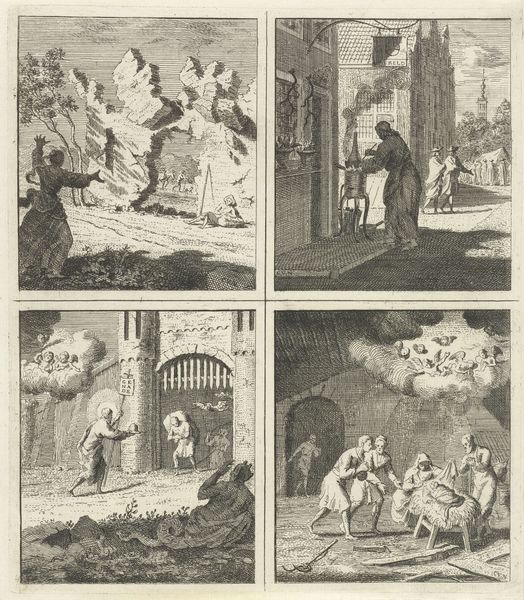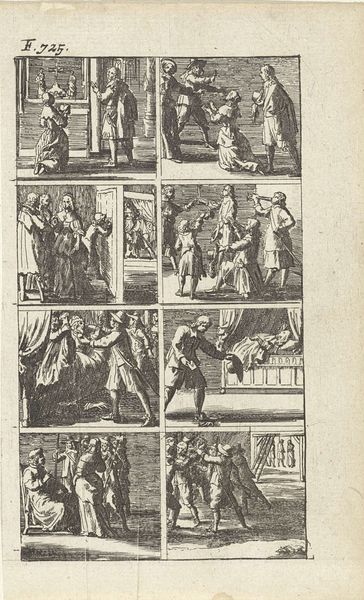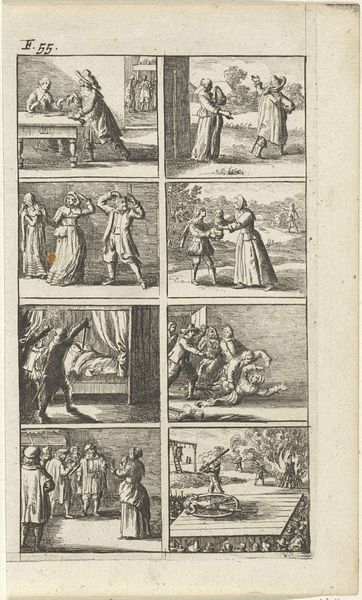
Verhaal met voorstellingen van moord en doodstraf (F. 259) 1667
0:00
0:00
print, engraving
#
narrative-art
#
baroque
# print
#
figuration
#
cityscape
#
history-painting
#
engraving
Dimensions: height 155 mm, width 92 mm
Copyright: Rijks Museum: Open Domain
This print by Abraham Dircksz. Santvoort depicts a sequence of scenes illustrating murder and punishment. Note the striking contrast between the intimate acts of violence and the public displays of justice. The motif of the executioner’s sword looms large here. For centuries, it has symbolized both the power of the state and the ultimate act of earthly judgment. Think of how often we see similar imagery in medieval tapestries, Roman reliefs, even in modern cinema. It resurfaces, each time laden with the weight of past meanings, yet adapted to new cultural contexts. Consider how the fear and awe associated with such violent imagery might tap into our collective subconscious, stirring primal emotions linked to mortality and social order. How does the artist evoke psychological tension through the contrasting depictions of chaos and control? Notice, for example, the motif of the horse in the center, losing its rider. The cyclical nature of violence and justice is a recurring theme throughout history. Santvoort’s print serves as a stark reminder of the non-linear progression of these symbols. They constantly resurface, evolve, and take on new meanings in different historical contexts, forever echoing through our cultural memory.
Comments
No comments
Be the first to comment and join the conversation on the ultimate creative platform.
